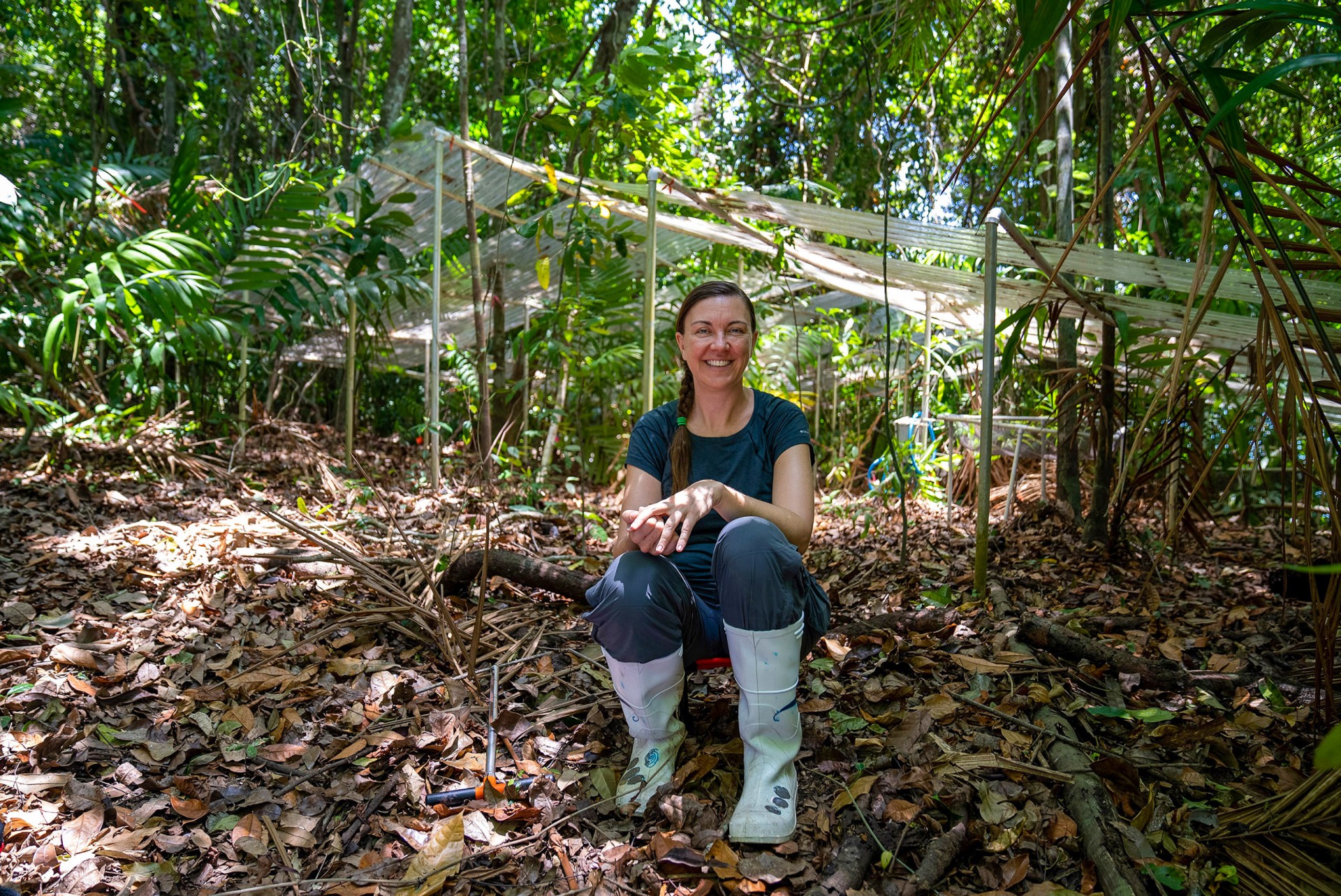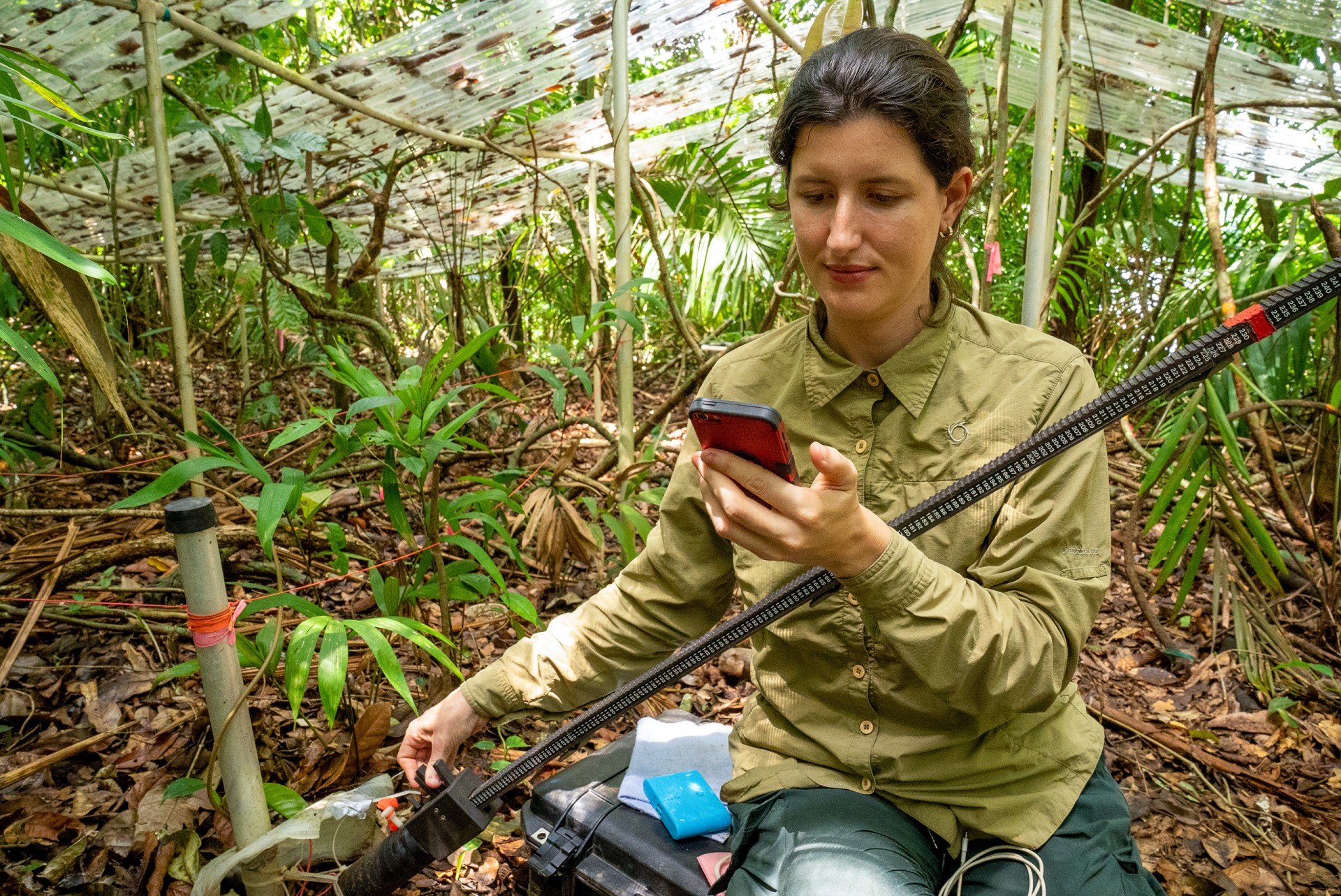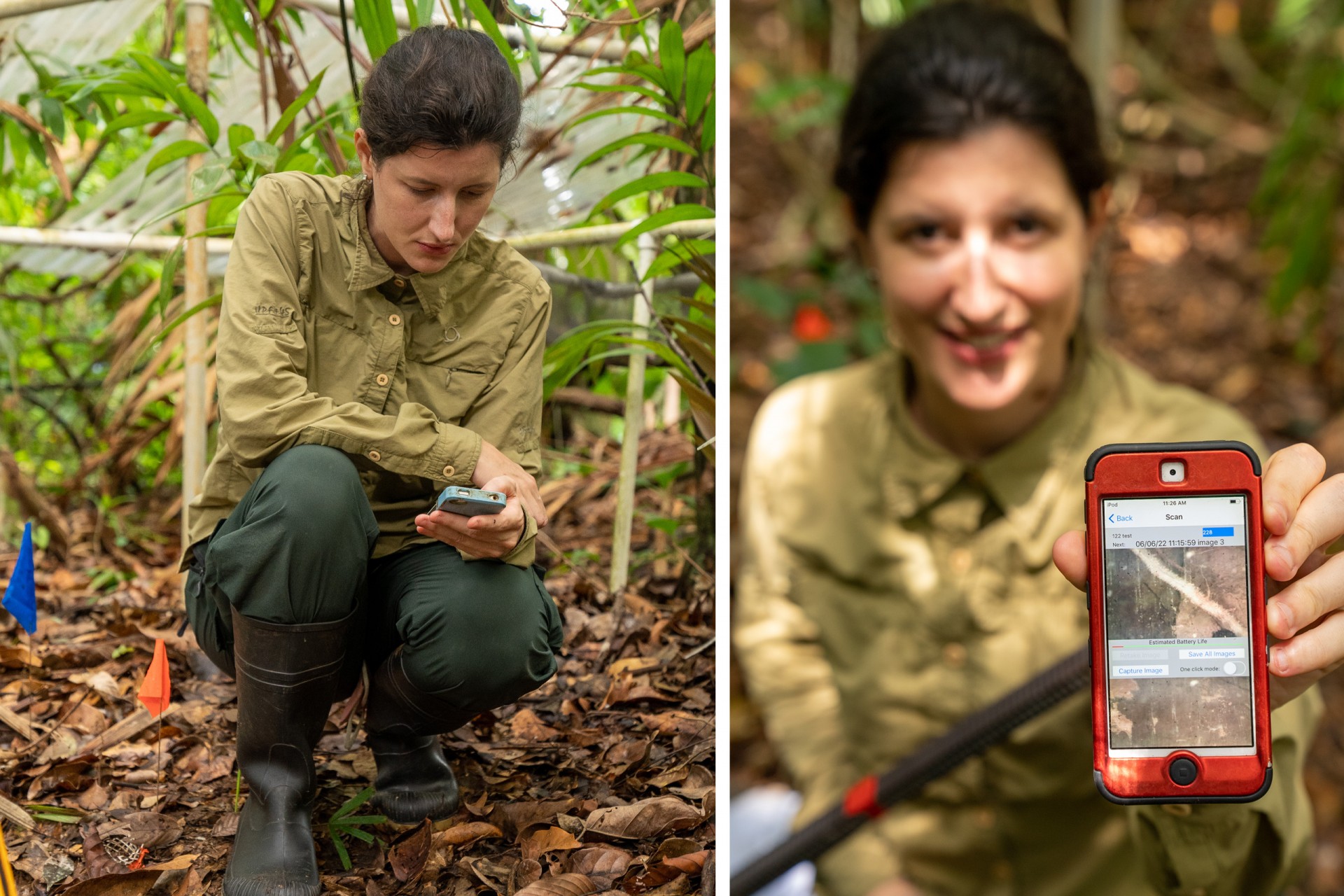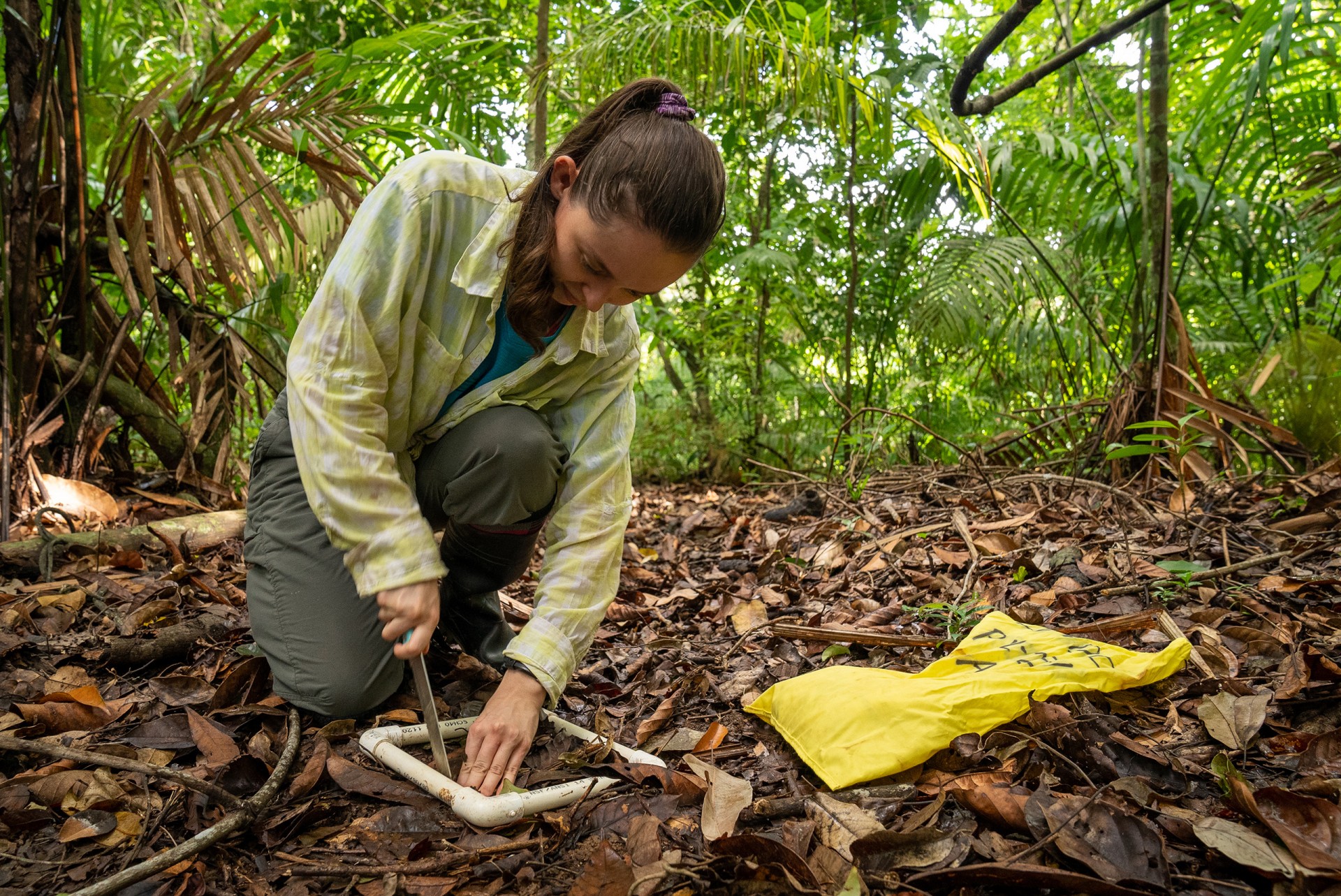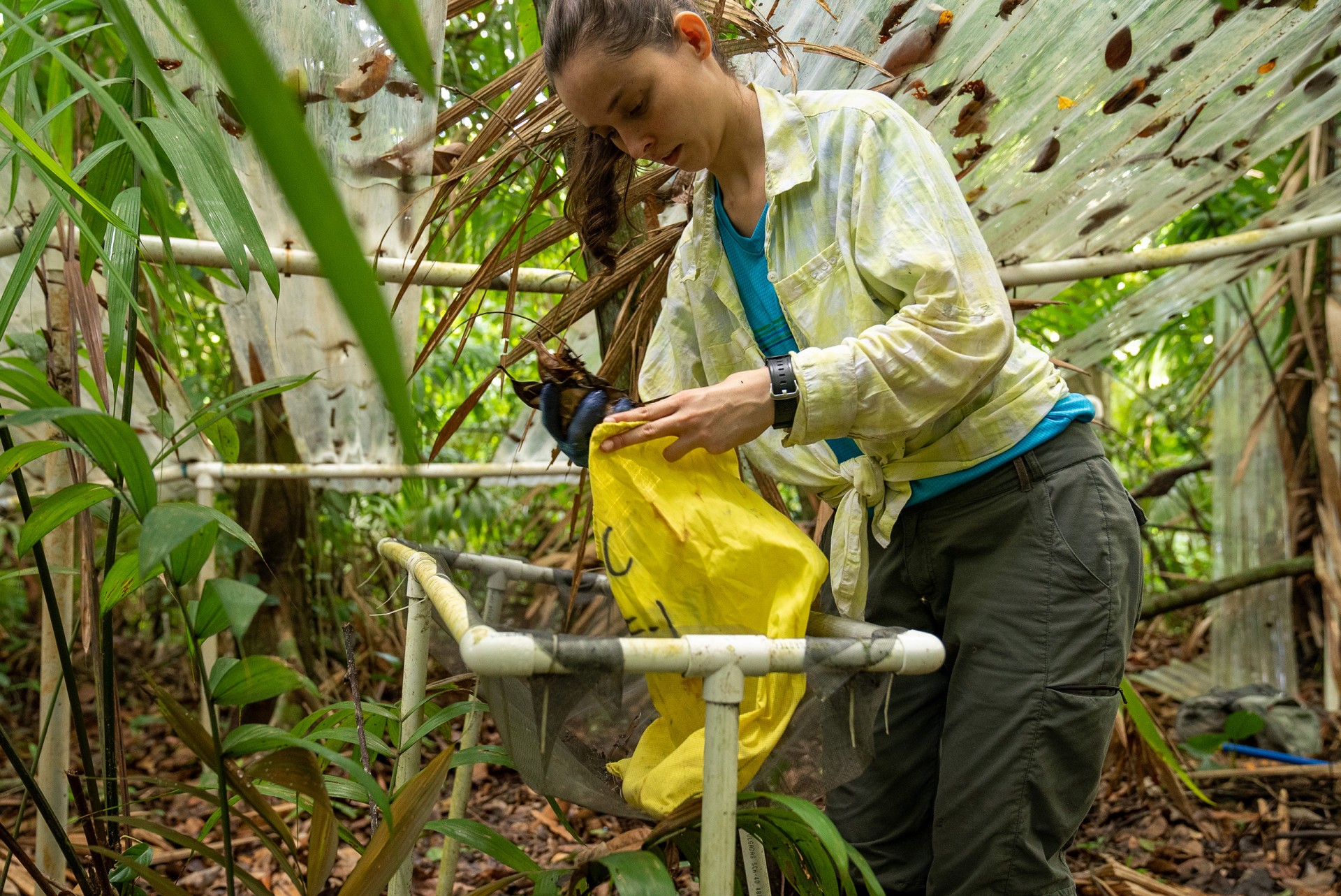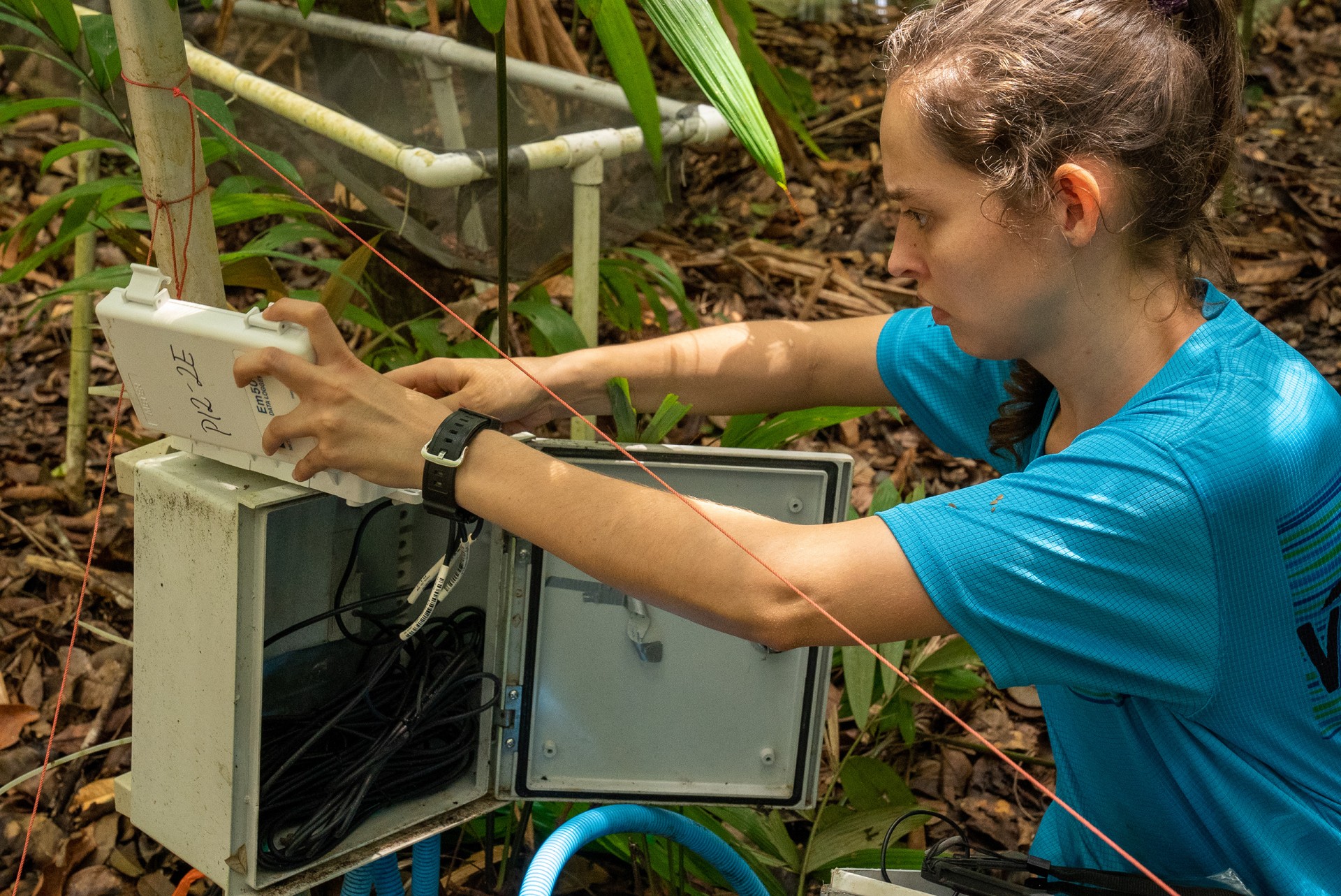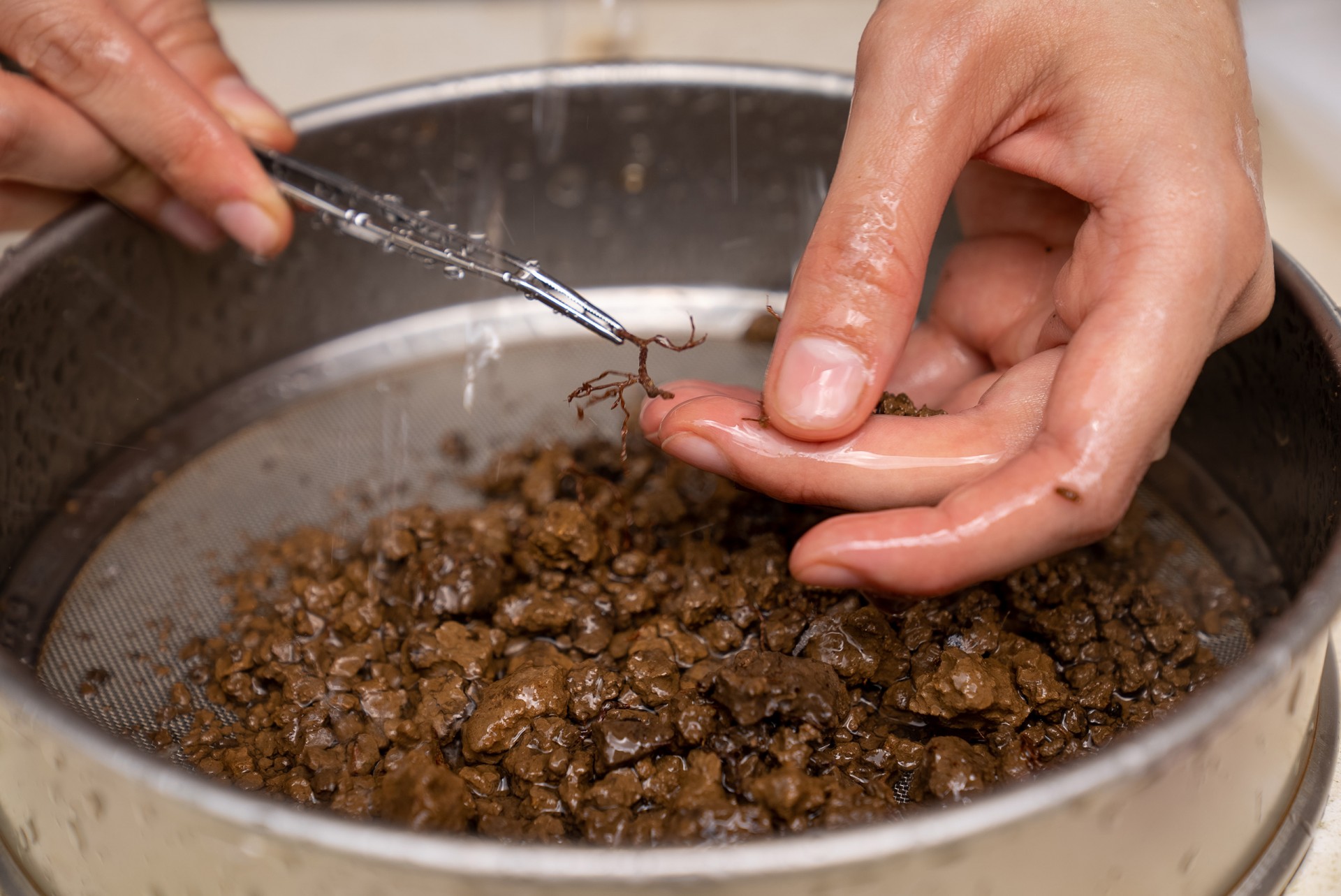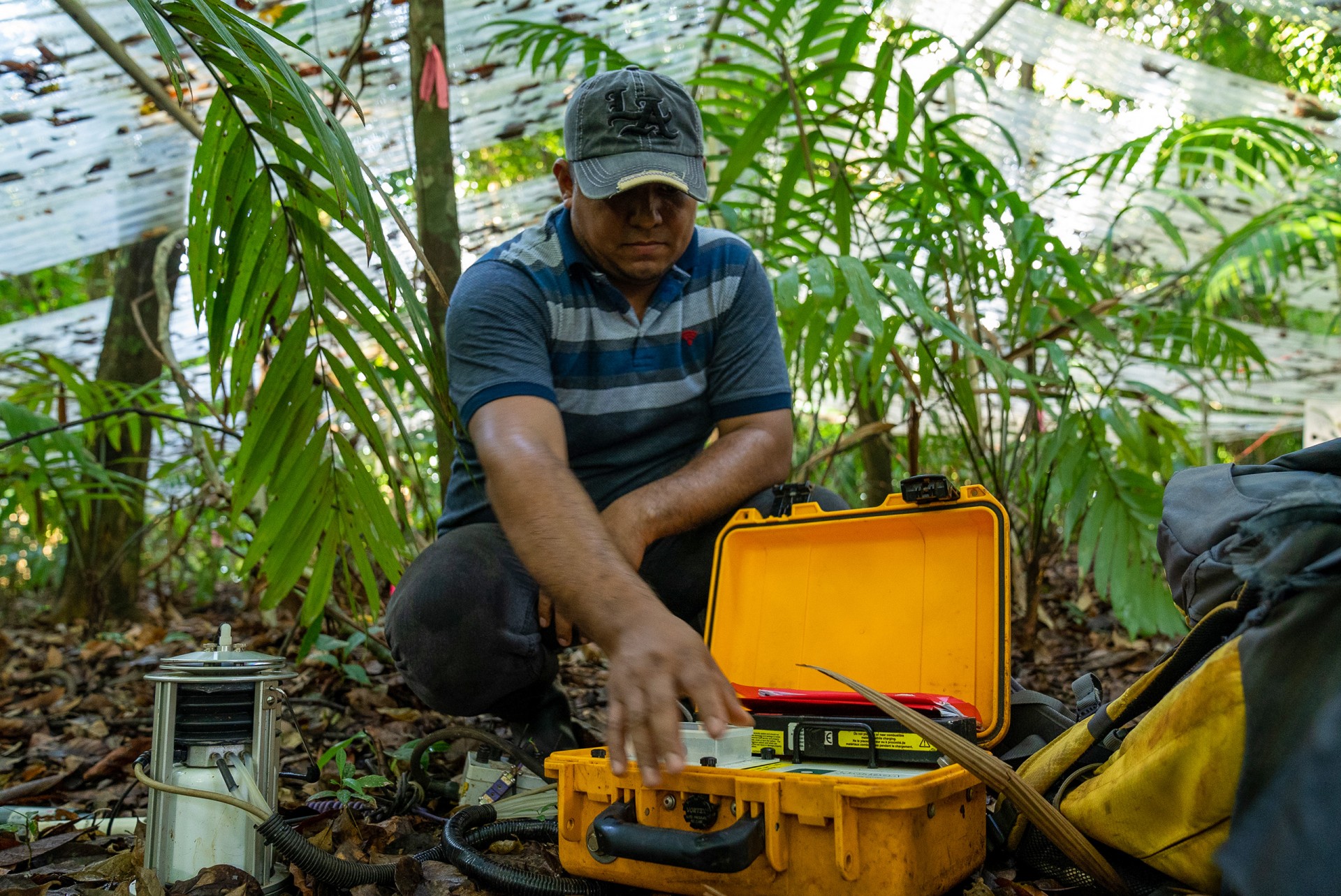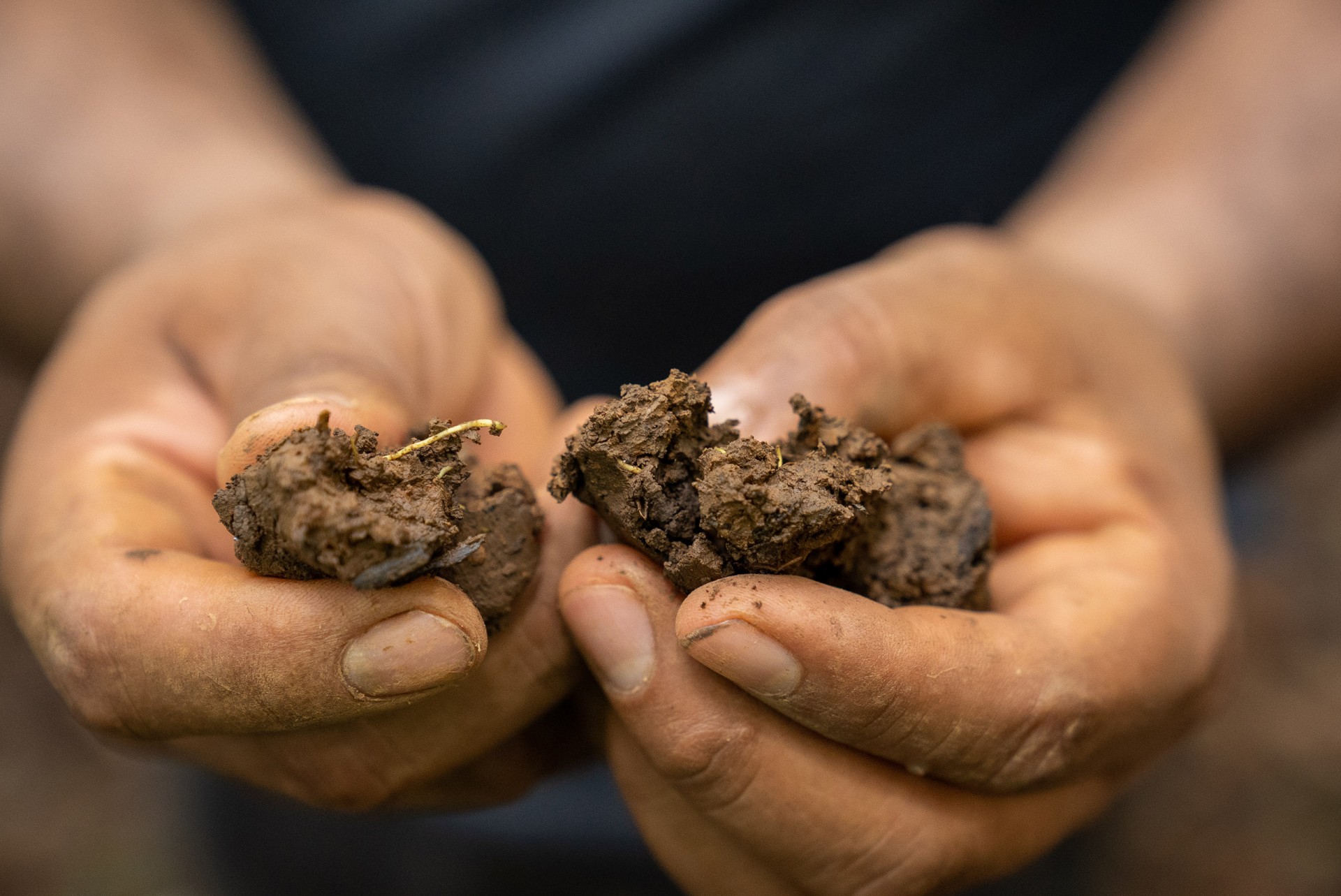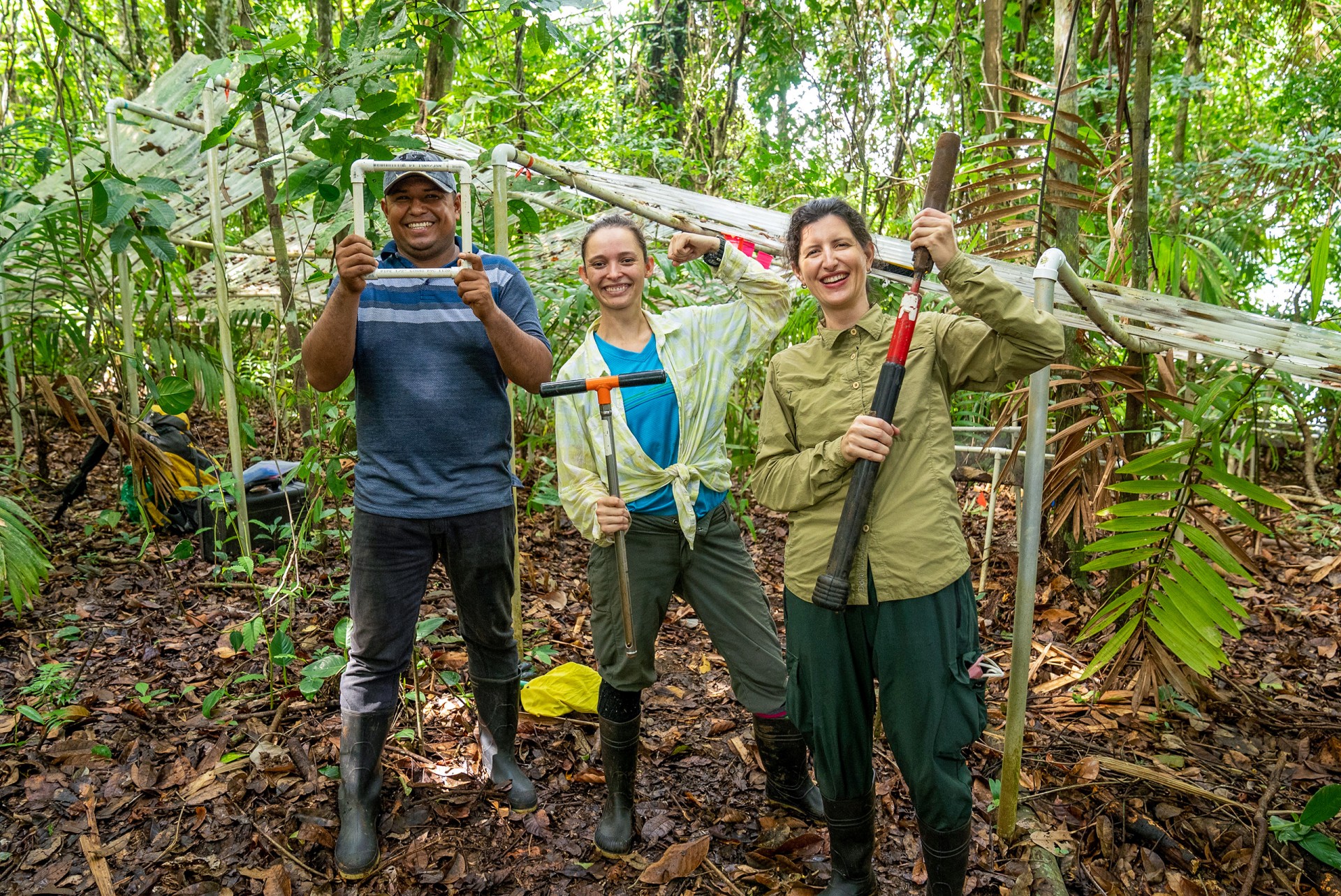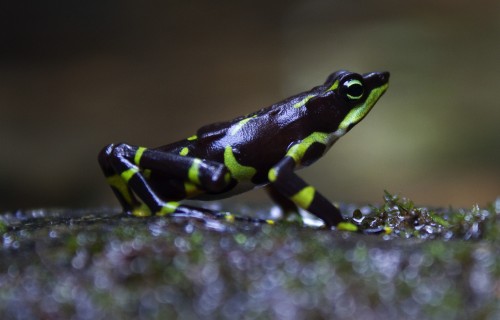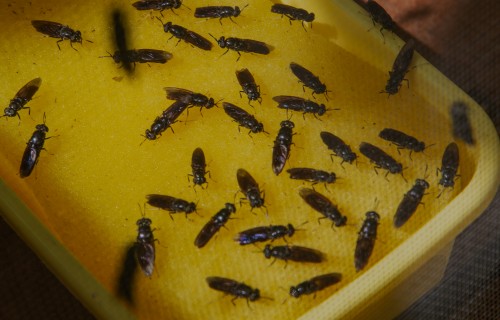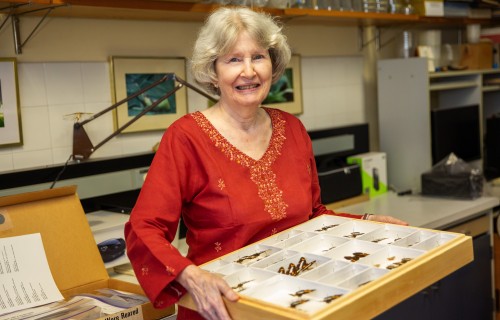Smithsonian science helps understand blue whale migratory and foraging patterns to inform conservation strategies
Chronic
drying
Getting to the roots: How does limiting rainfall affect tropical forest carbon storage?
Text by Leila Nilipour
An experiment preventing up to 70% of rain from reaching tropical forest soils aims to understand how important underground carbon stocks will respond to climate change.
When we think about what a healthy planet should look like, lush rainforests may be one of the first things on our minds. Trees help remove carbon dioxide from the atmosphere, storing the carbon as wood and releasing the oxygen we breathe in exchange. Tropical forests are particularly good at this, holding some of the largest carbon stocks on Earth in their massive tree trunks, roots, and soils. However, as drying events are predicted to occur more often in the tropics due to climate change, scientists are concerned about how these belowground carbon pools will respond. A group at the Smithsonian Tropical Research Institute (STRI) organized the Panama Rainforest Changes with Experimental Drying (PARCHED) experiment to find out.
Daniela Cusack, an Associate Professor at Colorado State University and Research Associate at the Smithsonian Tropical Research Institute has been leading the PARCHED experiment since 2015. Credit: Ana Endara, STRI.
“The main interest that we have is how drying is going to affect carbon storage in rainforests,” said Daniela Cusack, an Associate Professor at Colorado State University and Research Associate at STRI. She organized the PARCHED experiment in 2015 to test the effects of chronic drying on tropical forests within the Barro Colorado Nature Monument along the Panama Canal.
The field team, led by Cusack and postdoctoral fellow, Lee Dietterich, installed a series of structures to prevent up to 70% of the rain from reaching the ground in patches of the forest in four different sites with varying rainfall and soil fertility levels. They intended to simulate the effects of chronic drying when forests experience reductions in rainfall throughout the wet season or over the entire year.
“We know that drying events are becoming more frequent, so we are trying to improve our empirical understanding, and iterate this with ecosystem models, to better predict how tropical forests will respond to changes in precipitation,” said Colorado State University doctoral candidate Amanda Longhi Cordeiro during a field visit to one of the forest patches.
That day in the field, she inserted a special camera, called a minirhizotron, in an underground tunnel in the soil. The images appeared in a cell phone application, allowing the PARCHED team to look at the roots up to a meter in depth without disturbing the site. Infertile sites tend to have larger root biomass, especially in surface soils, because the roots explore for nutrients across a wider area compared with roots in fertile soils. By virtue of having more roots, infertile soils can also store more carbon, as published in two studies co-authored by Cusack among over 50 sites across the Panama lowlands.
“With drying, roots will probably grow deeper into the soil (searching for water)”, said Gabriela Quesada, a former PARCHED intern and PhD student at the University of South Florida who was in the field with Longhi Cordeiro.
That day they collected soil, root, leaf, and tree stem samples for analyses in the lab and measured soil humidity and temperature at different depths.
By paying attention to all these different components of tropical soils, the team hopes to figure out whether these soils will continue to store large amounts of carbon in the face of chronic drying, and if these responses will vary between different tropical forest types.
The images of roots captured by the minirhizotron camera were visible on a cell phone application. Credit: Ana Endara, STRI.
“This could point towards which types of tropical forests will be more resilient versus more vulnerable to climate change,” said Cusack.
With data collected over five years of artificial drying (plus three years of baseline data), the PARCHED team has found some answers. In 2022, a PARCHED study published in Biogeochemistry indicated that chronic drying reduced dissolved organic carbon in soils, and relatedly also reduced microbial biomass and decomposer activity. Following up on this, a microbial community study published in 2023 in Soil Biology & Biochemistry showed large changes in the microbial community composition with chronic drying in infertile rainforest soils, with communities shifting toward a “drought microbiome” (i.e., a microbial community more adapted to dry conditions). In contrast, the microbial community in the more fertile rainforest was more resilient and did not shift with drying.
The team’s latest paper published in 2023 in Global Biogeochemical Cycles found that overall, chronic drying is changing soil carbon cycling across the four Panamanian forests. However, the response varied according to soil fertility, such that only the most fertile soils had large losses of soil carbon with drying, and the wettest and most infertile soil had reduced soil carbon losses. These variable results mirror how the soil microbial community shifted in the earlier study. Overall, differences in soil fertility among rainforests appear to play an important role in governing how carbon cycling, nutrient cycling, and microbial communities will respond to climatic drying.
A related project led by STRI research associate Andrew Nottingham subjected tropical forest soils in Panama to artificial warming and found that carbon dioxide emissions increased dramatically, greatly exceeding their expectations. Their results were published in Nature Microbiology. The warming experiment is paired with one of the PARCHED sites, and the combined teams hope to start a warming and drying experiment one day.
If chronic drying causes stored carbon to be released from some rainforest soils, increasing the amount present in the atmosphere, the effects of climate change may become even more extreme.
By installing structures that prevent up to 70% of the rain from reaching the ground in certain patches of tropical forest, the PARCHED team tested the effects of chronic drying on its soils. Credit: Ana Endara, STRI.
“Soils hold more carbon than plants and the atmosphere combined, so understanding how they will react to climate change will help reduce uncertainty in model predictions of forest-climate feedbacks,” said Longhi Cordeiro.

